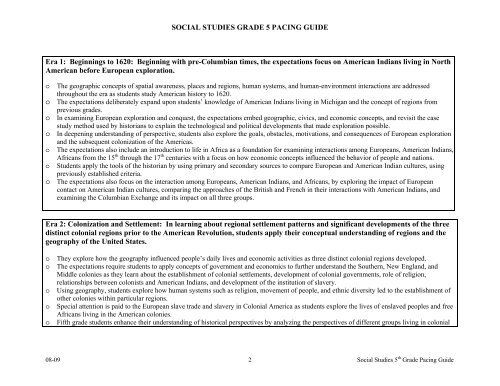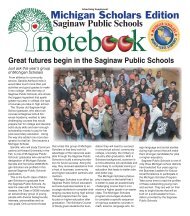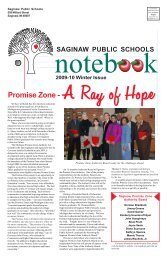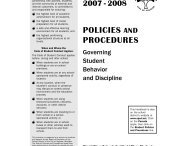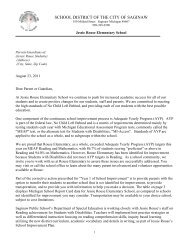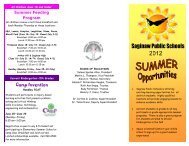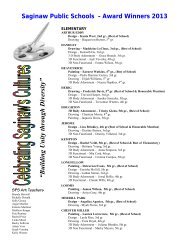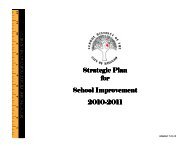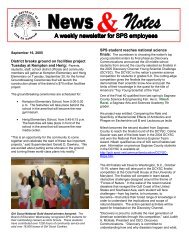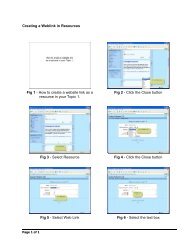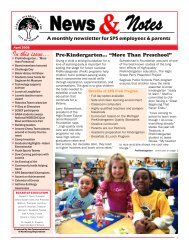SOCIAL STUDIES GRADE 5 PACING GUIDE Essential Questions: 1 ...
SOCIAL STUDIES GRADE 5 PACING GUIDE Essential Questions: 1 ...
SOCIAL STUDIES GRADE 5 PACING GUIDE Essential Questions: 1 ...
Create successful ePaper yourself
Turn your PDF publications into a flip-book with our unique Google optimized e-Paper software.
<strong>SOCIAL</strong> <strong>STUDIES</strong> <strong>GRADE</strong> 5 <strong>PACING</strong> <strong>GUIDE</strong><br />
Era 1: Beginnings to 1620: Beginning with pre-Columbian times, the expectations focus on American Indians living in North<br />
American before European exploration.<br />
o The geographic concepts of spatial awareness, places and regions, human systems, and human-environment interactions are addressed<br />
throughout the era as students study American history to 1620.<br />
o The expectations deliberately expand upon students’ knowledge of American Indians living in Michigan and the concept of regions from<br />
previous grades.<br />
o In examining European exploration and conquest, the expectations embed geographic, civics, and economic concepts, and revisit the case<br />
study method used by historians to explain the technological and political developments that made exploration possible.<br />
o In deepening understanding of perspective, students also explore the goals, obstacles, motivations, and consequences of European exploration<br />
and the subsequent colonization of the Americas.<br />
o The expectations also include an introduction to life in Africa as a foundation for examining interactions among Europeans, American Indians,<br />
Africans from the 15 th through the 17 th centuries with a focus on how economic concepts influenced the behavior of people and nations.<br />
o Students apply the tools of the historian by using primary and secondary sources to compare European and American Indian cultures, using<br />
previously established criteria.<br />
o The expectations also focus on the interaction among Europeans, American Indians, and Africans, by exploring the impact of European<br />
contact on American Indian cultures, comparing the approaches of the British and French in their interactions with American Indians, and<br />
examining the Columbian Exchange and its impact on all three groups.<br />
Era 2: Colonization and Settlement: In learning about regional settlement patterns and significant developments of the three<br />
distinct colonial regions prior to the American Revolution, students apply their conceptual understanding of regions and the<br />
geography of the United States.<br />
o They explore how the geography influenced people’s daily lives and economic activities as three distinct colonial regions developed.<br />
o The expectations require students to apply concepts of government and economics to further understand the Southern, New England, and<br />
Middle colonies as they learn about the establishment of colonial settlements, development of colonial governments, role of religion,<br />
relationships between colonists and American Indians, and development of the institution of slavery.<br />
o Using geography, students explore how human systems such as religion, movement of people, and ethnic diversity led to the establishment of<br />
other colonies within particular regions.<br />
o Special attention is paid to the European slave trade and slavery in Colonial America as students explore the lives of enslaved peoples and free<br />
Africans living in the American colonies.<br />
o Fifth grade students enhance their understanding of historical perspectives by analyzing the perspectives of different groups living in colonial<br />
08-09 2<br />
Social Studies 5 th Grade Pacing Guide


